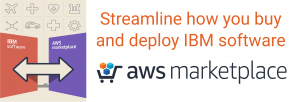Toolchain Trouble? Interoperability Is the Fix
The Importance of Integration in Modern Engineering
Interoperability refers to the ability of different systems, applications, and tools to work together seamlessly. In the context of systems engineering, this means that tools used across various stages of the product lifecycle – from requirements management and systems design to systems and software development and testing – can share data, automate workflows, and maintain a continuous thread of traceability.
In many organizations, toolchains often consist of different systems that operate in silos. These disconnected environments reduce collaboration, introduce errors due to manual data transfers, and slow down the overall development process. By improving information exchange, organizations can break down these silos and create a more efficient development environment.
Consider the following common engineering activities:
- Requirements Management: Capturing, organizing, and maintaining product requirements.
- Software Development: Writing, testing, and versioning code.
- Change Management: Tracking changes and ensuring they are linked to the correct requirements.
- Verification and Validation: Ensuring the product meets specifications and compliance standards.
When these activities are performed in separate, disconnected tools, the risk of miscommunication and data inconsistency increases. Improved integration ensures that each step in the workflow is connected, providing a single source of truth for all stakeholders.
Value of Interoperability: Beyond Tool Features
The value of interoperability extends beyond the features of any single tool. It lies in the ability to create a comprehensive, end-to-end view of the product development process. This visibility enables organizations to:
Improve Collaboration Across Teams
- Different teams – such as system engineers, software developers, and QA testers – can work in their preferred tools while still accessing relevant information from other systems.
- For instance, a software developer working in GitLab can view the original requirements stored in IBM Engineering Lifecycle Management (ELM) without switching tools or manually importing data.
Enhance Traceability
- Traceability is crucial for compliance, risk management, and quality assurance. By integrating tools, organizations can maintain a continuous thread of traceability from requirements to implementation and testing.
- This is particularly important in regulated industries such as automotive, aerospace, and medical devices, where proving compliance with standards is required.
Automate Repetitive Tasks
- Interoperability enables automation of manual, repetitive tasks such as updating requirements status, linking test cases to requirements, and generating compliance reports.
- Automation reduces the risk of human error and frees up engineering resources for more important activities.
Accelerate Decision-Making
- With real-time data flowing between systems, project managers and engineers can make informed decisions faster. They can identify bottlenecks, track progress, and adjust priorities based on accurate, up-to-date information.
Exploring Key Connectors and Integrations in Engineering Toolchains
Achieving interoperability requires leveraging various connectors and integrations that bridge the gaps between different tools and systems. Below are key solutions provided by SodiusWillert, Pure Variants, and other platforms that enhance interoperability. These connectors and integrations can play an important role in ensuring information flow and traceability across the engineering lifecycle.
Integration Example #1 – SodiusWillert’s OSLC Connectors: Bridging the Gap
Open Services for Lifecycle Collaboration (OSLC) is a set of standards that enables different tools to communicate with each other. SodiusWillert’s OSLC connectors enhance interoperability by allowing tools that don’t natively support OSLC to participate in integrated workflows.
Here are some of the OSLC connectors offered by SodiusWillert:
OSLC Connect for Jira:
- Integration with IBM ELM: This connector integrates Atlassian Jira with IBM ELM, enabling bidirectional linking of Jira issues and IBM ELM artifacts. This integration facilitates seamless collaboration between development and engineering teams, ensuring real-time data access and reducing the need to switch between tools.
- Integration with Siemens Polarion ALM: OSLC Connect for Jira also provides connectivity between Jira and Siemens Polarion ALM, allowing for the creation of trace links between related engineering artifacts across these platforms.
OSLC Connect for Windchill:
- Integration with PTC Windchill: This connector enables integration between IBM ELM and PTC Windchill, facilitating seamless data flow and traceability between product lifecycle management (PLM) and engineering tools.
Integration Example #2 – pure::variants Connectors: Managing Product Variability Across Toolchains
pure::variants is the leading solution for managing product line variability, and it integrates with multiple tools across the engineering lifecycle to ensure consistent configuration management:
Integration with Jira:
- The integration between pure::variants and Jira allows for tracking feature-specific issues and linking them to product variants. This ensures that bug reports and feature requests are correctly associated with the relevant product configurations.
Integration with Windchill:
- By connecting pure::variants with PTC Windchill, organizations can ensure that product configurations managed in pure::variants are accurately reflected in the PLM system. This integration helps maintain consistency between design data and manufacturing documentation.
Integration with IBM ELM:
- pure::variants integrates with IBM ELM to manage product line variability in requirements, design models, and tests. This ensures that all variants are properly managed across the lifecycle.
Integration Example #3 – GitLab Integrations: Expanding Traceability and Automation
GitLab is a powerful platform for version control, CI/CD, and DevOps practices. While there is no dedicated OSLC connector for GitLab, it can still be integrated with other tools to enhance workflows:
Integration with IBM ELM:
- GitLab can integrate with IBM ELM through custom workflows and APIs, providing traceability from requirements to code changes. This integration ensures that all code commits are linked to specific requirements, improving accountability and reducing the risk of missing functionality.
Integration with Windchill:
- GitLab can be connected to PTC Windchill through APIs or custom scripts to ensure that design and manufacturing data are aligned with software development processes. This integration helps bridge the gap between hardware and software teams.
Integration with Jira and Targetprocess:
- GitLab integrates with Atlassian Jira and Targetprocess to synchronize issues, epics, and stories. This integration ensures that development teams have a clear view of work items and their status across project management tools.
Integration Example #4 – Jira Integrations: Bridging Project Management and Engineering
Atlassian Jira is a widely used tool for project and issue management. When connected to other engineering tools, it enhances traceability and collaboration:
Integration with pure::variants:
- Linking Jira issues to pure::variants feature models allows teams to track development progress for specific product configurations.
Integration with Windchill:
- Connecting Jira with PTC Windchill ensures that product-related tasks and issues are accurately reflected in the PLM system, improving traceability across the product lifecycle.
Integration with Targetprocess:
- Jira can be connected to Targetprocess to synchronize agile work management across teams. This integration enables cross-functional teams to track and manage their work efficiently.
Integration Example #5 – Targetprocess Integrations: Connecting Portfolio Management to Engineering
Targetprocess is a versatile tool for agile portfolio management. It integrates with various engineering tools to ensure a cohesive workflow across business and technical teams:
Integration with GitLab:
- Targetprocess can be connected to GitLab to synchronize issues, commits, and CI/CD pipelines. This integration provides end-to-end visibility into the software development process.
Integration with Jira:
- Targetprocess integrates with Jira to ensure that portfolio-level work items are aligned with project-level tasks. This synchronization helps organizations maintain a clear view of their strategic objectives and project progress.
The Technical Challenges of Achieving Interoperability
While the benefits of interoperability are clear, achieving solid integrations between tools can be technically challenging. Common challenges include:
- Data Mapping: Different tools often use different data structures and formats. Ensuring that data is correctly mapped between systems requires careful planning and configuration.
- Authentication and Security: Integrated systems need to securely authenticate users across different platforms. This often involves implementing Single Sign-On (SSO) and adhering to security best practices.
- Performance and Scalability: As the number of integrated tools increases, so does the complexity of managing data flows and ensuring system performance.
- Version Compatibility: Tools are frequently updated, which can break existing integrations if not carefully managed.
Organizations must address these challenges to fully realize the benefits of interoperability. Using standards like OSLC and leveraging robust connectors can help mitigate some of these issues.
The Future of Engineering Toolchains
As product complexity continues to increase, the need for interoperability in engineering toolchains will only grow. Organizations that select and implement solutions with integration in mind, rather than simply “best of breed” will be better positioned to:
- Deliver products faster and with higher quality.
- Maintain compliance with industry standards.
- Foster collaboration across geographically distributed teams.
The future of engineering lies in integrated toolchains that empower teams to work smarter, not harder. By focusing on the value of interoperability, companies can unlock the full potential of their engineering resources and achieve sustainable success in an ever-evolving market.
What next?
Selecting and maintaining an integrated engineering toolchain comes with challenges. With the growing complexity of tools and systems, organizations face hurdles in ensuring communication between different tools and platforms, managing data consistency, and maintaining compatibility as tools evolve.
At 321 Gang, we specialize in helping organizations navigate these challenges. Our breadth of knowledge and depth of expertise in systems engineering tools enables us to help guide clients through the complexities of selecting the right solutions, ensuring they align with both technical and business objectives.
We can help clients identify the most cost-effective, efficient solutions, optimize their engineering workflows, and implement integrations that can help maximize productivity while reducing downtime and errors. By partnering with 321 Gang, you can improve collaboration across teams, and enhance traceability and compliance. Contact us to see how 321 Gang can help your organization.

321 Gang | 14362 North FLW | Suite 1000 | Scottsdale, AZ 85260 | 877.820.0888 info@321gang.com

